Realizing Children’s Rights in Sierra Leone
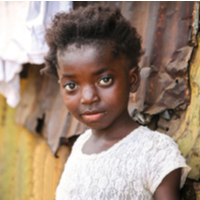
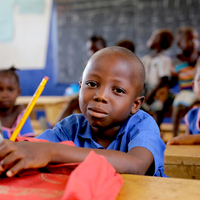
Children in Sierra Leone face an array of interlinked obstacles which inhibit the fulfilment of their human rights. Most pressingly, children are at risk of early child marriage and adolescent pregnancy, child labour, female genital mutilation and gender-based violence. These risks, combined with systemic poverty, poor health conditions and educational challenges, endanger all children in the country.

Children’s Rights Index: 5,35 / 10
Black level: Very serious situation
Population: 8.1 million
Pop. ages 0-14: 41%
Life expectancy: 55.92 years
Under-5 mortality rate: 109.2‰
Sierra Leone at a glance
Sierra Leone is a country situated on the southwest coast of West Africa. It shares land borders with Liberia to the southeast and Guinea to the northeast. Sierra Leone has a significant, traumatic history drawn from its involvement in the transatlantic slave trade. Freetown, the country’s capital, was founded by British philanthropists in 1787 with the aim of repatriating former slaves. The country underwent over 150 years of British colonial rule (1808 – 1961), with slavery being abolished during the early stages of the country’s development in 1833 (UNDP).
Following independence, the country’s growth has been marred by socioeconomic challenges, none more so than the armed conflict and civil war which devastated Sierra Leone for 11 years, between 1991-2002. During the unrest, crimes and human rights violations were perpetuated with impunity by two rebel groups known as the Revolutionary United Front and the Armed Forces Revolutionary Council (AFRC). The civil war displaced over 2 million people (UNDP) and subjected thousands of children, women and girls to sexual and physical violence, while boys were frequently recruited and exploited as child soldiers (Human Rights Watch, 2012).
Beyond the 50,000 deaths brought by the civil war (UNDP), the country continues to experience serious developmental hurdles. 60% of the population live below the poverty line (UNDP) and, simultaneously, climate change effects are decreasing crop yields and revenues.
Saddled with unsustainable mining activities, population growth and pollution, the country still faces significant obstacles to stable growth. Numerous crises – such as the Ebola crisis of 2014, the floods of 2019 and the ongoing COVID-19 pandemic – have exacerbated malnutrition levels and further reduced widespread access to healthy drinking water and sanitisation (Action Against Hunger, 2019), as well as youth employment opportunities (World Bank, 2019).
An industry of particular concern is Sierra Leone’s mining sector which takes advantage of the country’s rich minerals and diamonds. Sierra Leone’s historical development is often tied to its ¨blood diamonds¨, which played a lucrative role in funding the civil war (BBC, 2018). Since the ending of the war, as a country, they have made great economic strides and the government has worked to suppress the illicit trading of minerals and diamonds (BBC, 2018).
Status of children’s rights[1]
The lingering effects of colonialism and the civil war in Sierra Leone have left children’s rights in a very precarious position. Due to various long-term issues such as frequent child marriage, gender inequality, poverty and restricted access to education, the country has sought to implement a variety of national polices in line with the Sustainable Development Goals (SDGs). Sierra Leone ratified the Convention on the Rights of the Child (CRC) in 1990, and the Convention on the Elimination of All Forms of Discrimination Against Women (CEDAW) in 1998, to mainstream the protection of women and children into legislative frameworks.
The country also ratified the African Charter on the Rights and Welfare of the Child in 2002. As Sierra Leone is a member of the Economic Community of West African States (ECOWAS), a regional group promoting economic cooperation and integration to improve the living standards of its member states, together in 2017, they committed to adopting the Strategic Framework for Strengthening National Child Protection Systems.
Notwithstanding these positive commitments, international expert bodies such as the Committee on the Rights of the Child have criticised the country’s continued failure to protect and value young girls as well as children with disabilities (Committee on the Rights of the Child, 2016). There is also a need for greater data collection (Committee on the Rights of the Child, 2016) to accurately monitor children’s rights issues and track their progress. Broadly, the country’s children’s rights response is encompassed by its Child Rights Act of 2007. Broken down into eight distinct ‘parts’, the body of legislation forms the backbone of all child protection initiatives ongoing in the country.
Addressing the needs of children
Right to education
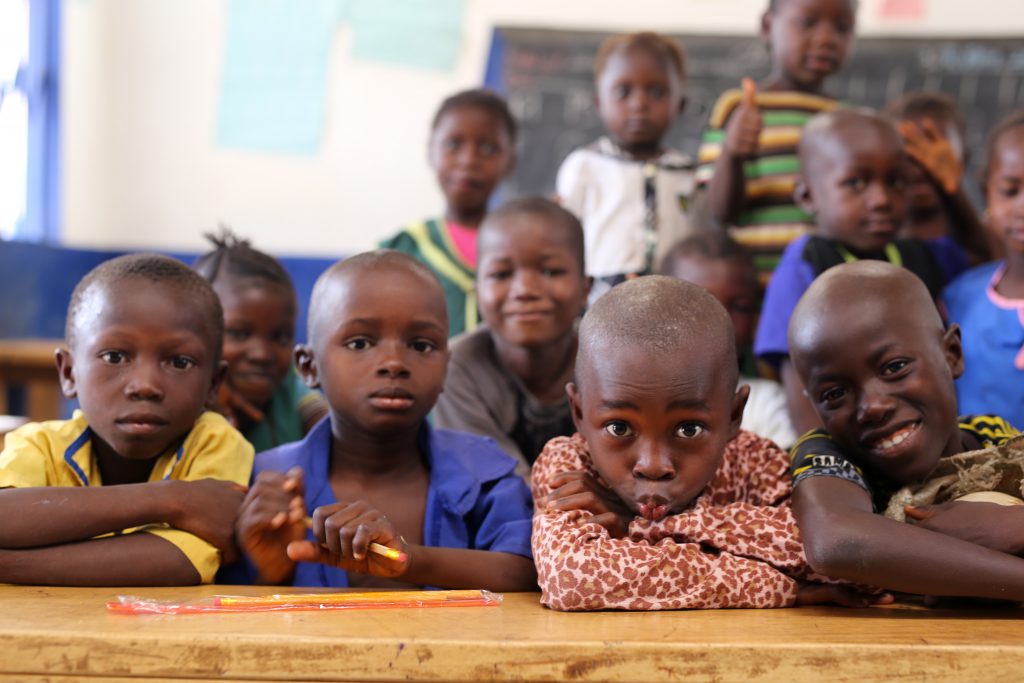
For the majority of children in Sierra Leone, access to quality education remains a challenge. The main barriers to education can be broken down into two, interrelated categories: cultural norms and physical impediments. Culturally, the continued marginalisation of women has enabled gender-based discrimination and the practice of female genital mutilation (FGM) – which often forces girls to leave schools. Similarly, a lack of inclusive educational environments, discriminating against and stigmatising disadvantaged children and those with disabilities, makes it difficult for disadvantaged children to survive educational environments (Street Child, 2018).
The perpetual physical abuse of girls – through sexual and gender-based violence – combined with mental abuse in educational environments, severely hampers their educational opportunities. Further, high rates of forced early child marriage and adolescent pregnancies, in addition to a lack of priority placed on girls’ education, often means that girls are forced to leave permanent education at a critically young age.
The Ebola crisis of 2015 is a flagship case study of the challenges girls face in accessing education in Sierra Leone. During the pandemic, a formal ban was implemented by the Sierra Leonean government that prohibited young, pregnant girls from accessing education. This policy was put in place in response to the rise in the number of adolescent pregnancies which accompanied the pandemic (Amnesty International, 2020).
The government’s refusal to allow pregnant girls attendance at school further entrenched discrimination and gender inequalities (Amnesty International, 2019). In December 2019, this ban was ruled illegal by ECOWAS and subsequently struck-out domestically. Since the ban was lifted, pregnant girls are now able to take secondary school exams.
Despite this, however, barriers still exist such as the lack of schools or teachers, sexual abuse by teachers and limited access and transportation to schools across the country (US Department of Labour, 2019). On the matter of sexual abuse perpetrated by teachers, the government enacted the Sexual Offences Amendment Act in 2019, which aimed to provide harsher punishments to offenders (US Department of Labour, 2019).
Aside from the plight faced by girls specifically (due to cultural practices), other physical impediments limit all children’s right to education. The primary factors of this kind are poverty and an inability to physically access schools from remote locations. As a direct effect of the challenges listed above, often, children are unable to complete primary school or transition into secondary school (UNICEF). The most recent UNESCO statistics from 2017 illustrate that less than 50% of children complete secondary education, leading to a national literacy rate of less than 60% for the population under the age of 15 (UNESCO, 2017).
In response to these challenges, the Sierra Leonean government launched, in 2018, a Free Quality School Education (FQSE) initiative that aimed to provide free tuition to all children that were in a government approved school. Although the initiative was well received, a large majority of children were unable to attend schools because they lived in remote villages, making access to schools difficult (UNICEF). Summarily, while the FGSE initiative should yield fruit in the coming years, Sierra Leone must simultaneously put in place mechanisms to better support girls and children with disabilities to ensure that they have reliable access to quality education.
Right to health
The infant mortality rate in Sierra Leone for children under the age of five is 96.3 per 1000 live births. This worrying statistic is emblematic of both the widespread shortage of adequate hospital and care facilities, as well as persistently high levels of malnutrition. Heightened by the Ebola crisis of 2015 – which sparked nationwide inflation – chronic malnutrition remains a significant challenge for Sierra Leone. 31.3% of children suffer from stunted growth (Action Against Hunger, 2019).
Sierra Leone also suffers one of the highest burdens of malaria in the world, with children under five years old particularly susceptible to infection, illness and death (WHO, 2016). Malaria is estimated to account for up to 20% of all child mortality (WHO, 2016). Further still, the country remains vulnerable to climate change and pollution, which is killing fertile land (UNDP) and eliminating opportunities for agricultural employment.
Right to clean water and sanitation
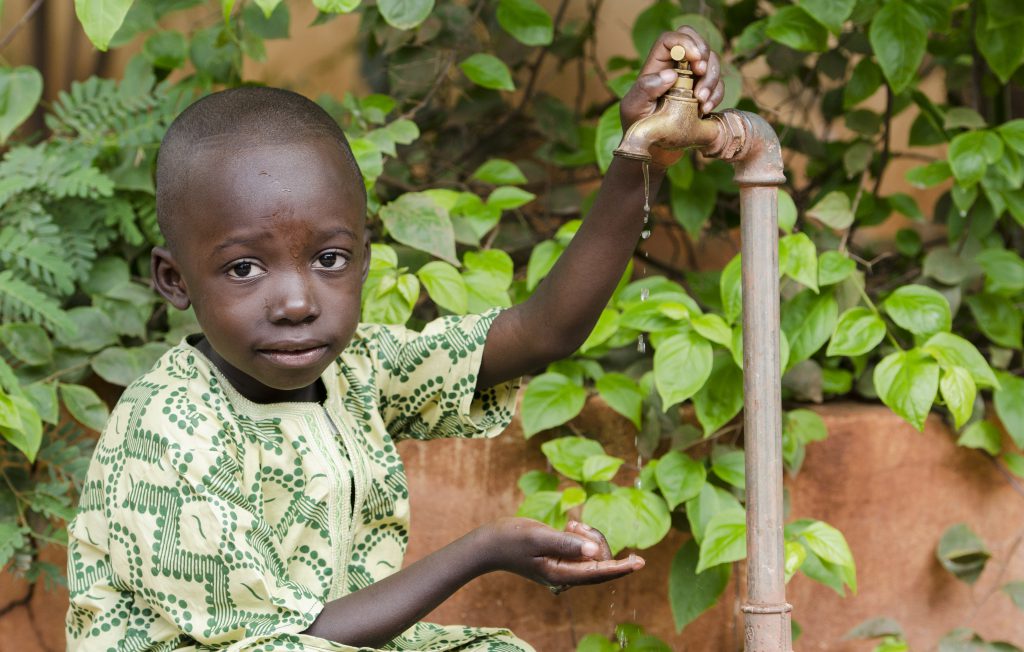
32.2% of the Sierra Leonean population suffers from a lack of access to drinking water (Action Against Hunger, 2019). This is a problem rooted in the instability caused by the civil war and made worse by the financial impacts of the Ebola crisis – during which only one in four households had a place to wash their hands, with one in 14 able to access soap (WaterAid). Overarchingly, only 16 percent of the population has access to basic sanitation services, with 28% defecating in the open (UNICEF, 2018). These inadequate living standards make the country more susceptible to diseases, epidemics and pandemics.
Right to identity
The Committee on the Rights of the Child, in its fifth periodic report of Sierra Leone’s implementation of the CRC, cited birth registration as a significant challenge (Committee on the Rights of the Child, 2016). Despite the implementation of birth registration programmes – and the fact that birth registration is free of cost for everyone in the country – over 20% of births were found to e unregistered during a 2010 survey (Committee on the Rights of the Child, 2016). Undocumented children are more vulnerable because the absence of identification often obstructs children’s access to education, healthcare and other basic necessities. If not remedied, a lack of birth registration can have negative effects that continue into adulthood, too, such as reduced employment opportunities.
Risk Factors → Country-specific challenges
Poverty
More than 60% of the country’s population lives on less than $1.25 per day, putting them below the national poverty line (Bigelow, 2018). Though agriculture is expected to catalyse GDP growth in the coming years (World Bank, 2019), the country remains vulnerable. In the wake of another public health crisis due to COVID-19 – building on separate crises in the past such as the Ebola outbreak and the civil war – the country’s poorest population are susceptible to extenuating circumstances.
This poverty exists despite the presence of rare natural resources such as diamonds and minerals, highlighting the wealth disparity present and the lack of a functioning economic market. Heightened by widespread institutional corruption and weak national infrastructure (Ravichandran, 2011), the country’s most vulnerable are at risk – including children.
Child labour
Sierra Leone has ratified all the key international conventions concerning child labour such as the International Labour Organization (ILO) Minimum Age Convention, 1973 (No. 138); Worst Forms of Child Labour Convention, 1999 (No. 182); the UN CRC, Palermo Protocol on Trafficking in Persons, UN CRC Optional Protocol on the Sale of Children, Child Prostitution and Child Pornography and UN CRC Optional Protocol on Armed Conflict.
Although laws and regulations have been established to eradicate child labour, gaps still exist within the legal framework to adequately protect children. For example, the definition of “light work” in the Child Right Act is not specific enough to prevent children from child labour as it does not provide a limit to the number of hours children work or what constitutes “light work” (US Department of Labour, 2019).
As a result of weak national policy and social programmes, research from 2019 illustrates that 35% of children in Sierra Leone are subject to child labour (US Department of Labour, 2019). These children engage in the worst forms of child labour, particularly in the mining sector and through commercial sexual exploitation. Child labour is also prevalent in the agriculture sector for the cultivation of cassava, coffee, cocoa, palm oil, rice and peanuts. Within the industry sector, children work in diamond and mineral mines, quarries and in construction and manufacturing (US Department of Labour, 2019).
Sierra Leone is also a known source, transit and destination country for the trafficking of children for commercial sexual exploitation and forced labour. Nationally, “men pikin” which translates to foster care in Krio, is the internal form of child trafficking, whereby family members will send children to urban and developed areas in the promise of better educational opportunities. Instead, these children are subjected and forced into labour which include domestic work, mining, agriculture, street hawking and scrapping for metal (US Department of Labour, 2019).
Child soldiers
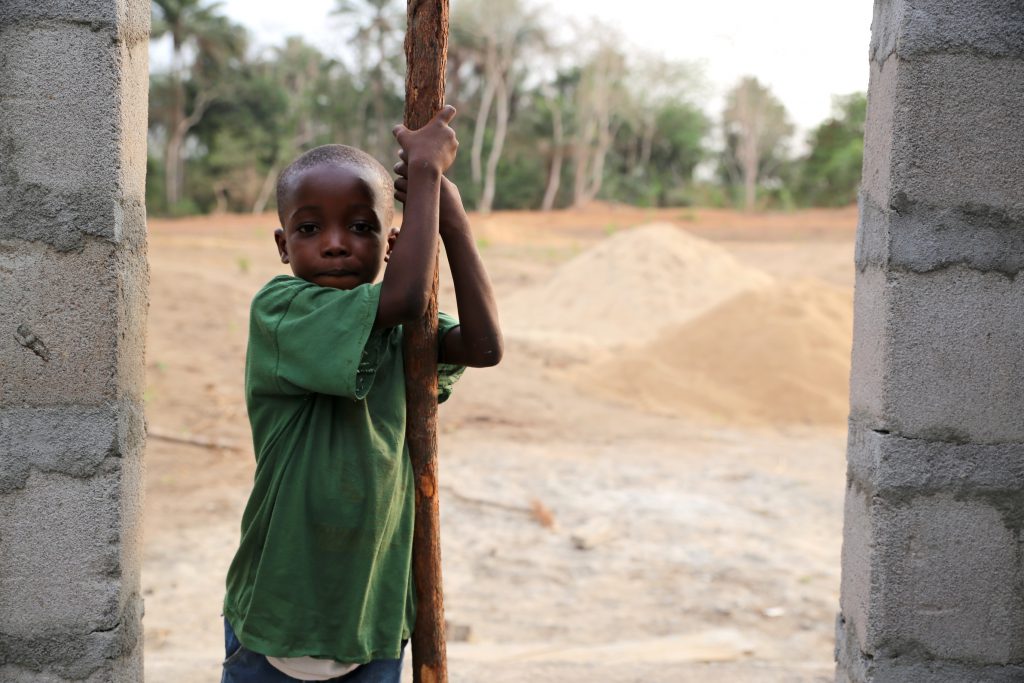
Almost 11 years of civil war and armed conflict in Sierra Leone has devastated the lives of thousands of children. During the conflict, children as young as five were coerced into the Revolutionary United Front (RUF) before committing various atrocities under military duress (Borgen, 2019). These children were exploited as human shields and hard labourers among other roles, often losing family and any sense of normalcy as they were robbed of their development (Borgen, 2019). 20 years removed from the war, organisations in Sierra Leone are working to reintegrate traumatised youths into society, providing rehabilitative support and opportunities to participate in normal employment opportunities.
Sexual and gender-based violence
According to a national survey from 2019, 62% of women between the age of 15 and 49 have experienced sexual or gender-based violence in Sierra Leone, while 61% of all married women in the same age category have also experienced this abuse (UNFPA). Unabated incidences of sexual and gender-based violence triggered a national state of emergency in 2019, which has been followed by an array of measures designed to eliminate the practice (Mitchell, 2020).
Of particular concern is the ongoing pandemic, which – much like the civil war and Ebola crisis – threatens to expose more women and girls to abuse. More than 200,000 women suffered abuse during the civil war, a problem mirrored in the rise of teen pregnancies and assault of girls during the Ebola crisis (Plan International, 2014). To remedy this challenge, the government has implemented the National Male Involvement Strategy for the Prevention of Sexual and Gender-Based Violence, established a gender-based violence hotline and worked to upscale centres which support gender-based violence victims (UNFPA).
Child marriage
In Sierra Leone, child marriage is a widespread and critical issue. 30% of girls are married before the age of 18, while a further 13% of girls are married before the age of 15. In parallel, 7% of boys are married before the age of 18. Sierra Leone has one of the highest (top 20 in the world) rates of child marriage amongst boys. The most common regions within the country where child marriages take place are Port Loko, Kambia, Tonkolili and Koinadugu (Girls Not Brides, 2020). Child marriage is further exacerbated by drivers such as: Female Genital Mutilation and Cutting (FGM/C), poverty, level of education, and adolescent pregnancy.
In 2018, as a part of the UNICEF-UNFPA Global Programme to Accelerate Action to End Child Marriage, 225 action plans were set up across 9 districts in Sierra Leone to prevent child marriage, FGM and adolescent pregnancy. Building on this, the national government collaborated with various United Nations agencies to launch the National Strategy on the Prevention of Teenage Pregnancy and Ending Child Marriage in Sierra Leone (Girls Not Brides, 2020). Until March 2020, pregnant girls in Sierra Leone were banned from attending school or sitting exams. Following a ruling from the ECOWAS in December 2019, this ban was ordered to be lifted with immediate effect.
To support other initiatives, Sierra Leone put in place a policy to ensure that pregnant girls were attending schools. This proved to be an important measure as it sought to improve education for girls, considering that adolescent pregnancy is one of the key drivers of early child marriage (Girls Not Brides). The Child Rights Act of 2007 sets the minimum age for marriage as 18 years old. However, the Customary Marriage and Divorce Act 2009 permits children to be married with parental consent and does not stipulate a minimum age for marriage (Girls Not Brides, 2020). This grey area requires further attention.
In accordance with SDG target 5.3, Sierra Leone recently made a commitment to eliminate early and forced child marriage by 2030. Additionally, in 2013 and 2014, Sierra Leone co-sponsored the United Nations General Assembly (UNGA) meeting on child, early and forced marriage (Girls Not Brides, 2020). More broadly, Sierra Leone’s ratification of the CRC in 1990, and the CEDAW in 1998, sets an obligation for free and full consent to marriage (Girls Not Brides, 2020).
Beyond international obligations, Sierra Leone has also committed to ending child marriage on a continental level. In 2016, the government launched the African Union Campaign to end child marriage in Africa. Simultaneously, they committed to adopting the Strategic Framework for Strengthening National Child Protection Systems. Under this framework, one of the main priorities is protecting children from early and forced child marriages (Girls Not Brides, 2020)
Adolescent pregnancy
In addition to alarmingly high rates of child marriage, teenage pregnancy is also exceptionally common in Sierra Leone. In 2018, the World Bank listed Sierra Leone as one of the top 20 countries in the world for adolescent (age 15-19) pregnancy, with 110 births per thousand (World Bank, 2018). Teenage pregnancy restricts girls’ life opportunities, regularly interfering with access to education and employment. It also increases the risk that young girls are exposed to child marriage, domestic violence and sexual abuse, and HIV infections (Mason, 2017).
Female genital mutilation/Cutting
Female genital mutilation/cutting (FGM/C) is a prevalent practice in Sierra Leone. The Northern region of the country has the highest prevalence rate at 96.3% and the Western region at 75.6%. The procedures are often undertaken by individuals with no medical training, without anaesthetic, using equipment that is improperly sanitised (Amnesty International UK, 2020). This carries major risks for young girls, including severe bleeding, infections and long-term ailments that can cause infertility or child-birth complications (DW, 2002).
Despite global recognition as an extreme human rights violation, FGM is regularly practiced in Sierra Leone with limited restriction. The only instance in which the practice was curtailed was during the 2014-15 Ebola crisis, during which the government banned FGM indefinitely – with fines payable for those who did not adhere to the ruling – to prevent the spread of the disease (Equality Now). Alarmingly, following the passing of the pandemic, FGM was allowed to resume.
Written by Vanessa Cezarita Cordeiro
Last updated on 18 March 2021
References:
Action Against Hunger. “Sierra Leone.”
Amnesty International. (2020, March 30). Sierra Leone: Discriminatory ban on pregnant girls attending school is lifted.
Amnesty International UK. (2020, May 18). “Sierra Leone: Putting an end to FGM.”
BBC. (2018, April 5). Sierra Leone Country Profile.
Equality Now. “Sierra Leone: Enact a comprehensive anti-FGM law.”
Girls Not Brides. (2020). Child Marriage in Sierra Leone.
Human Rights Watch. (2012, April 11). The Armed Conflict in Sierra Leone.
Johns Hopkins COVID-19 Coronavirus Resource Center 2021.
Lavelle, C. (2020, June 4). “Protecting children in Sierra Leone.”
Mason, H. (2017, September 19). “Ending child marriage and teenage pregnancy in Sierra Leone.”
Mitchell, C. (2020, February 6). “Books and bills: tackling sexual violence in Sierra Leone.”
Ravichandran, S. (2011, July 28). “Factors of persistent poverty in Sierra Leone.”
Sherwood Bigelow, C. (2018, July 15). “10 little-known facts about poverty in Sierra Leone.”
Stewart, H. (2019, December 11). “Children no longer: healing child soldiers in Sierra Leone.”
Street Child. (2018, May). A study on the barriers to education for children with disabilities in Sierra Leone.
UNESCO Institute of Statistics. “Sierra Leone.”
UNICEF. UNFPA. (2016). UNFPA-UNICEF Global Programme to End Child Marriage.
United Nations Population Fund. “Sierra Leone gender-based violence.”
US Department of Labour. (2019). 2019 Findings on the Worst Forms of Child Labour: Sierra Leone.
World Bank. (2019, October 13). “The World Bank in Sierra Leone.”
World Health Organization. (2016, December 13). “Tackling malaria in Sierra Leone.”
[1] This article by no means purports to give a full or representative account of children’s rights in Sierra Leone; indeed, one of the many challenges is the scant updated information on Sierra Leonean children, much of which is unreliable, not representative, outdated or simply non-existent.

